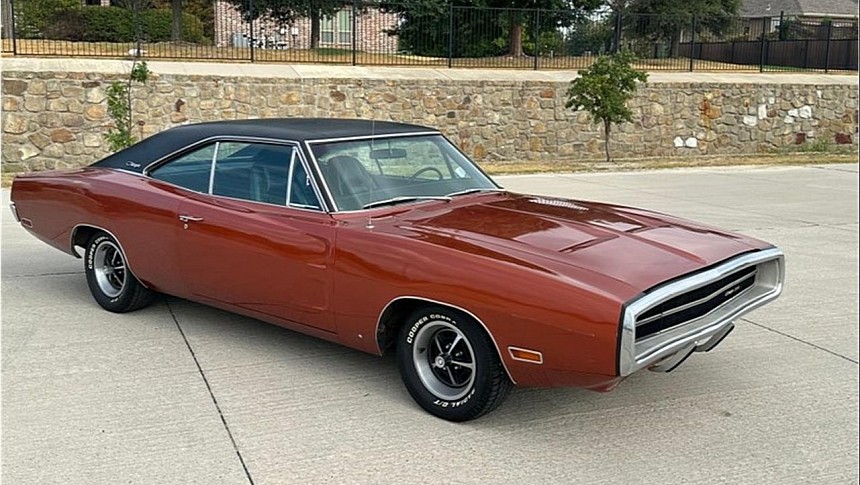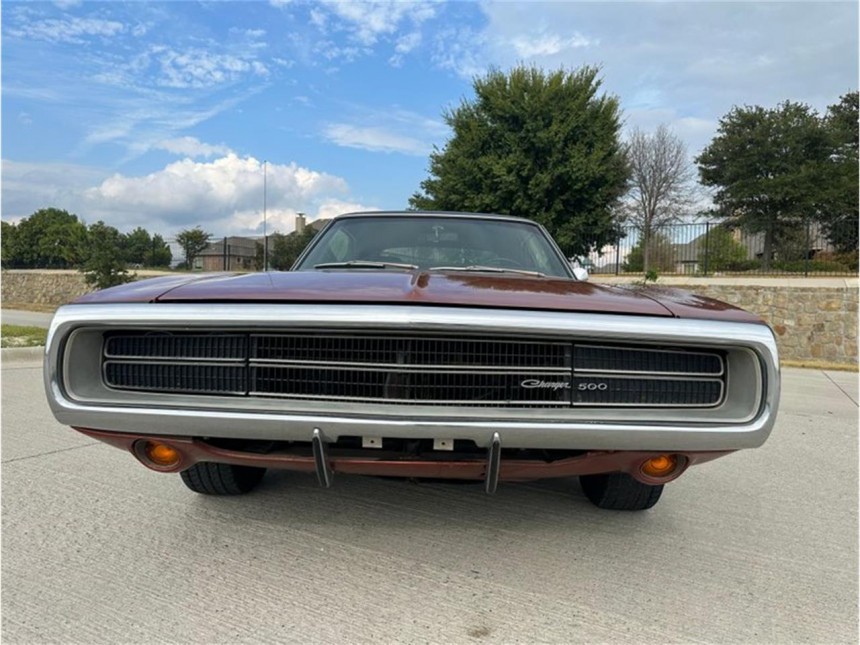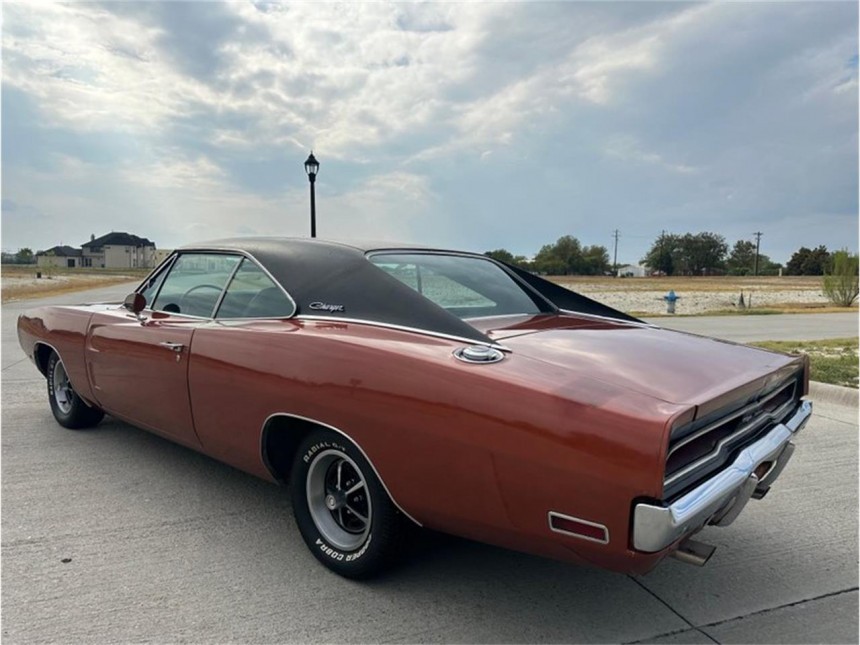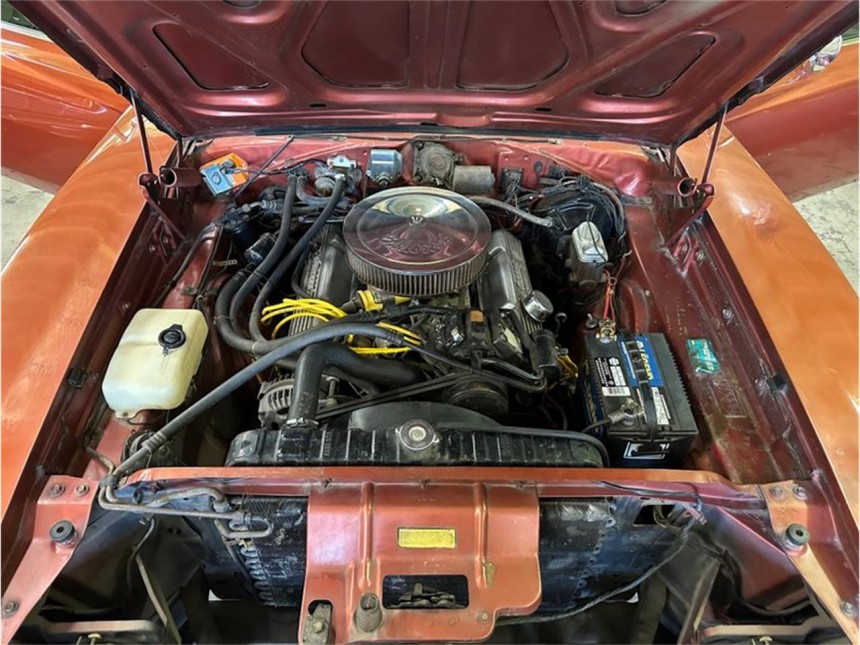In the final year of the second generation of the Charger, Dodge introduced the standard-production 1970 model with few changes from the previous year. However, it made several modifications to the trim levels, most notably putting the ‘500’ badge on its iconic muscle car. Faced with the fierce internal competition from the newly arrived challenger, the E-Body Challenger, the Charger fell drastically in sales. Perhaps the news about the third-generation models going on sale in 1971 put buyers’ plans on halt in what is largely considered the peak year of the muscle car age.
Any Mopar devotee will be able to tell apart a ’68, a ’69, and a ’70 Charger by simply gawking at the cars’ front or rear. Perhaps the most striking exterior visual difference between the rebellious ’69 and the one that followed it is the front loop bumper, which gave the 1970 Dodge Charger a somewhat formal look. From Chrysler’s perspective, the best accomplishment was the lowering of the base price to $3,001 (for the Slant-Sixes).
Mother Mopar saved a few bucks by replacing a bench seat for the bucket seats, getting rid of the door pockets, installing less fussy window moldings, and moving the electric clock to the ‘optional at extra cost’ list. Hoping to capitalize on the 1969 famous Daytona-inspired versions of the Charger, Dodge introduced the ‘500’ trim level. But…
Unlike the high-performance 500 of 1969, which came with the 440 Magnum and the 426 HEMI V8s as the only powertrains available, the 1970 Dodge Charger 500 was a much more domestic animal. Simply put, it was an upgraded basic Charger with bucket seats, an electric clock, wheel lip moldings, and 500 medallions in the front grille and rear taillight finish panel. A ‘Charger 500’ emblem on the front grille and rear finish panel indicated the version.
The 1970 Dodge Charger 500 was powered by the standard 318 (5.2-liter V8), with two big-block options, the 383-cubic-inch (6.3-liter) with either two- or four-barrel carburetion. Its list price was $3,139, and it could be ordered with bucket seats with an optional center cushion with a fold-down armrest or a center console.
Another cool(ing) new option on the 1970 Charger was the electrical sunroof (made of steel) that mandated a vinyl roof to go with it. And, as a technical upshift, the headlights sliding doors were actuated by electric motors instead of the clumsy, slow, and finicky vacuum pumps from the previous years.
In 1970, Dodge saw its flagship torpedoed hard, with a total Charger production of 46,315, down over 40% from the previous year and more than half the record sales from 1968. Of those disappointing figures, the Charger 500 accounted for more than half of the sales effort, with 27,461. The downfall could be equally attributed to the launch of the new superstar Dodge, the Challenger pony car, and the Charger’s imminent replacement with a new generation, due in 1971.
Down on its sales knees, but not out of the fight, the Charger from 1970 is still a proper muscle car worthy of the ‘Charger’ coat of arms. Even if the ‘500’ medallion strapped to its neck didn’t make it a knight in battle-worn armor, the car is no slouch and by no means a disappointment to own or drive. Yes, the ‘five-zero-zero’ was a subtle hint to the Daytona 500 – and probably all other 500-mile high-speed events, Indy 500 included.
Heck, it might as well have been a nod to all high-speed appointments and everything with a ‘500’ reference, short of the Galaxie 500 from Ford. So, no, the 1970 Dodge 500 doesn’t have the flush rear window and flush grille built as homologation specials for the body mods to be green-lighted into NASCAR-sanctioned competitions.
For the 1970 model year, Dodge took the ‘500’ moniker and applied it to the Charger as the most luxurious of the bunch. Following in the wheel tracks of the Monaco 500 and the Coronet 500, the Charger was sort of a logical step up for the rowdy muscle car. With the Challenger now carrying the high-performance banner as Dodge’s big gun battleship, the Charger could be relegated to other duties.
After all, in 1966, when the first Charger came out, luxury was the high-value part of the package, with performance coming second on the list (even if the 426 HEMI V8 was a very enticing – and expensive - option). Remember how the first-ever Charger offered four bucket seats for its occupants? The 1970 Charger 500 had a similar treat, albeit only for the front row, with high-back buckets with integrated headrests. The adjustable cushion was ruled out by the feds for 1970, hence the extra tall front seats.
Of the 27,461 Charger 500s built in 1970, only 29 came with a slant-six; the rest got the V8 treatment – and the small-block 318 was the preferred choice for buyers, with 13,101 units sold (and only 82 of those engines were mated to the three-speed manual transmission). For a bit of thrill behind the wheel, the 383 V8 was just the right combination of power and economy.
The more tamed two-barrel motor was coupled with an automatic tranny – and that was the end of it. The four =speed could only be optioned with the more potent four-barrel 383 (at extra cost). All in all, both variants of the powertrain (2V and 4V) garnered over 14,000 examples. One of the 7,109 two-throat big-block is proud to claim that it made it to 2023 without a scar and with all the papers to support its history.
Currently residing in the Lone Star State of Texas (in Allen, if somebody wishes to see it in person), this highly original survivor ‘with minor updates done’ is for sale. The car, engine, and transmission match their numbers – and two broadcast sheets support this statement – and the paint is reportedly ‘in amazing condition’ for its age.
The car did live in California for most of the 53 years since it was assembled, but it took a short trip to Washington. That’s probably where it got the rust spot in the trunk floor and the other on the passenger’s side lower quarter panel. The front seat covers have been replaced, but the rest of the interior is original, and the Charger 500 runs, drives, stops, and steers as it should, with all the necessaries in working order.
The drivetrain has been refreshed with ceramic-coated headers, dual exhaust, Edelbrock intake, carburetor, air cleaner, and Mopar Performance valve covers. Although not standard, the Magnum 500 wheels (‘with good tires’) look the part on this car that asks $79,500.
Mother Mopar saved a few bucks by replacing a bench seat for the bucket seats, getting rid of the door pockets, installing less fussy window moldings, and moving the electric clock to the ‘optional at extra cost’ list. Hoping to capitalize on the 1969 famous Daytona-inspired versions of the Charger, Dodge introduced the ‘500’ trim level. But…
Unlike the high-performance 500 of 1969, which came with the 440 Magnum and the 426 HEMI V8s as the only powertrains available, the 1970 Dodge Charger 500 was a much more domestic animal. Simply put, it was an upgraded basic Charger with bucket seats, an electric clock, wheel lip moldings, and 500 medallions in the front grille and rear taillight finish panel. A ‘Charger 500’ emblem on the front grille and rear finish panel indicated the version.
Another cool(ing) new option on the 1970 Charger was the electrical sunroof (made of steel) that mandated a vinyl roof to go with it. And, as a technical upshift, the headlights sliding doors were actuated by electric motors instead of the clumsy, slow, and finicky vacuum pumps from the previous years.
In 1970, Dodge saw its flagship torpedoed hard, with a total Charger production of 46,315, down over 40% from the previous year and more than half the record sales from 1968. Of those disappointing figures, the Charger 500 accounted for more than half of the sales effort, with 27,461. The downfall could be equally attributed to the launch of the new superstar Dodge, the Challenger pony car, and the Charger’s imminent replacement with a new generation, due in 1971.
Down on its sales knees, but not out of the fight, the Charger from 1970 is still a proper muscle car worthy of the ‘Charger’ coat of arms. Even if the ‘500’ medallion strapped to its neck didn’t make it a knight in battle-worn armor, the car is no slouch and by no means a disappointment to own or drive. Yes, the ‘five-zero-zero’ was a subtle hint to the Daytona 500 – and probably all other 500-mile high-speed events, Indy 500 included.
Heck, it might as well have been a nod to all high-speed appointments and everything with a ‘500’ reference, short of the Galaxie 500 from Ford. So, no, the 1970 Dodge 500 doesn’t have the flush rear window and flush grille built as homologation specials for the body mods to be green-lighted into NASCAR-sanctioned competitions.
After all, in 1966, when the first Charger came out, luxury was the high-value part of the package, with performance coming second on the list (even if the 426 HEMI V8 was a very enticing – and expensive - option). Remember how the first-ever Charger offered four bucket seats for its occupants? The 1970 Charger 500 had a similar treat, albeit only for the front row, with high-back buckets with integrated headrests. The adjustable cushion was ruled out by the feds for 1970, hence the extra tall front seats.
Of the 27,461 Charger 500s built in 1970, only 29 came with a slant-six; the rest got the V8 treatment – and the small-block 318 was the preferred choice for buyers, with 13,101 units sold (and only 82 of those engines were mated to the three-speed manual transmission). For a bit of thrill behind the wheel, the 383 V8 was just the right combination of power and economy.
Currently residing in the Lone Star State of Texas (in Allen, if somebody wishes to see it in person), this highly original survivor ‘with minor updates done’ is for sale. The car, engine, and transmission match their numbers – and two broadcast sheets support this statement – and the paint is reportedly ‘in amazing condition’ for its age.
The car did live in California for most of the 53 years since it was assembled, but it took a short trip to Washington. That’s probably where it got the rust spot in the trunk floor and the other on the passenger’s side lower quarter panel. The front seat covers have been replaced, but the rest of the interior is original, and the Charger 500 runs, drives, stops, and steers as it should, with all the necessaries in working order.
The drivetrain has been refreshed with ceramic-coated headers, dual exhaust, Edelbrock intake, carburetor, air cleaner, and Mopar Performance valve covers. Although not standard, the Magnum 500 wheels (‘with good tires’) look the part on this car that asks $79,500.


























